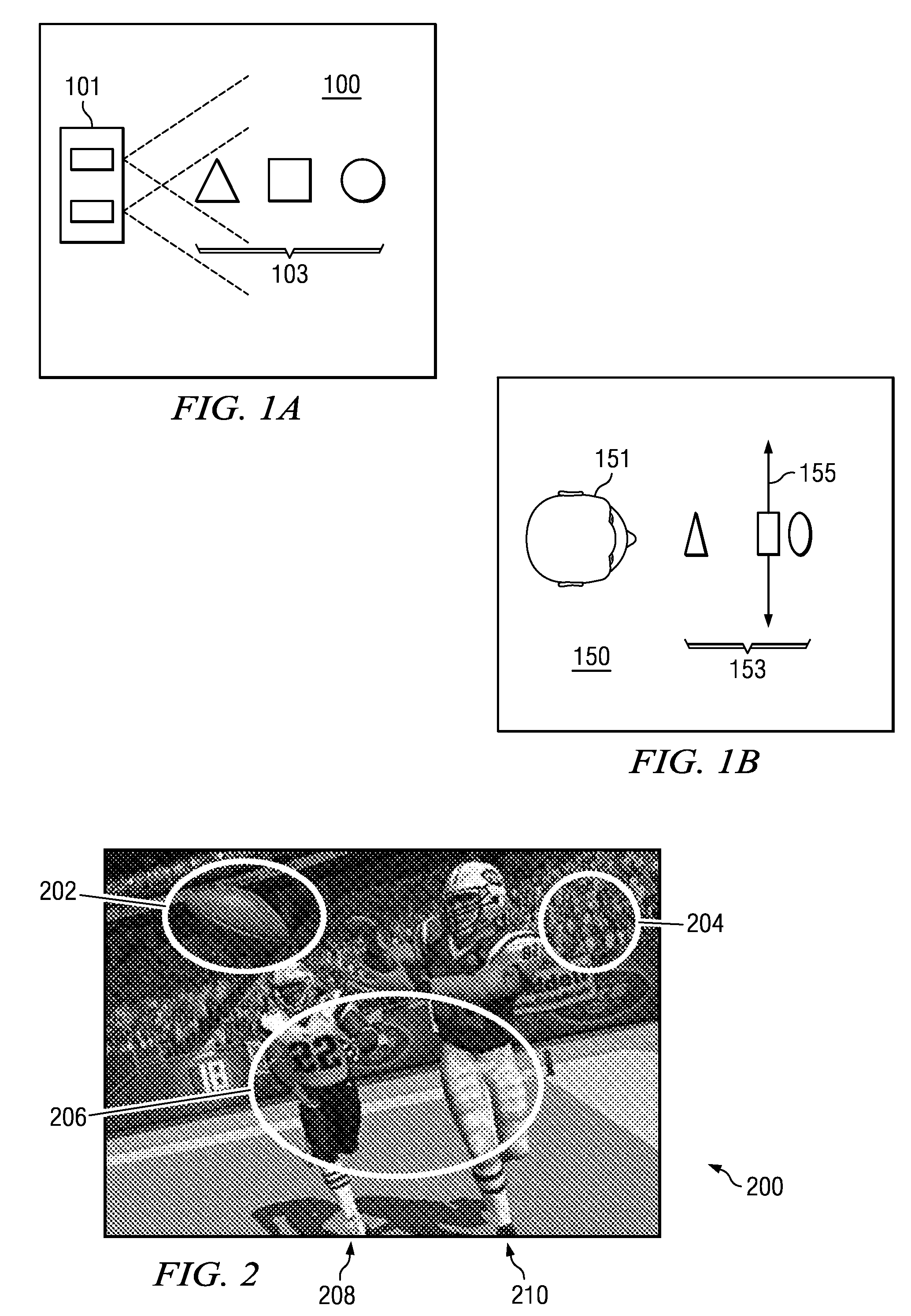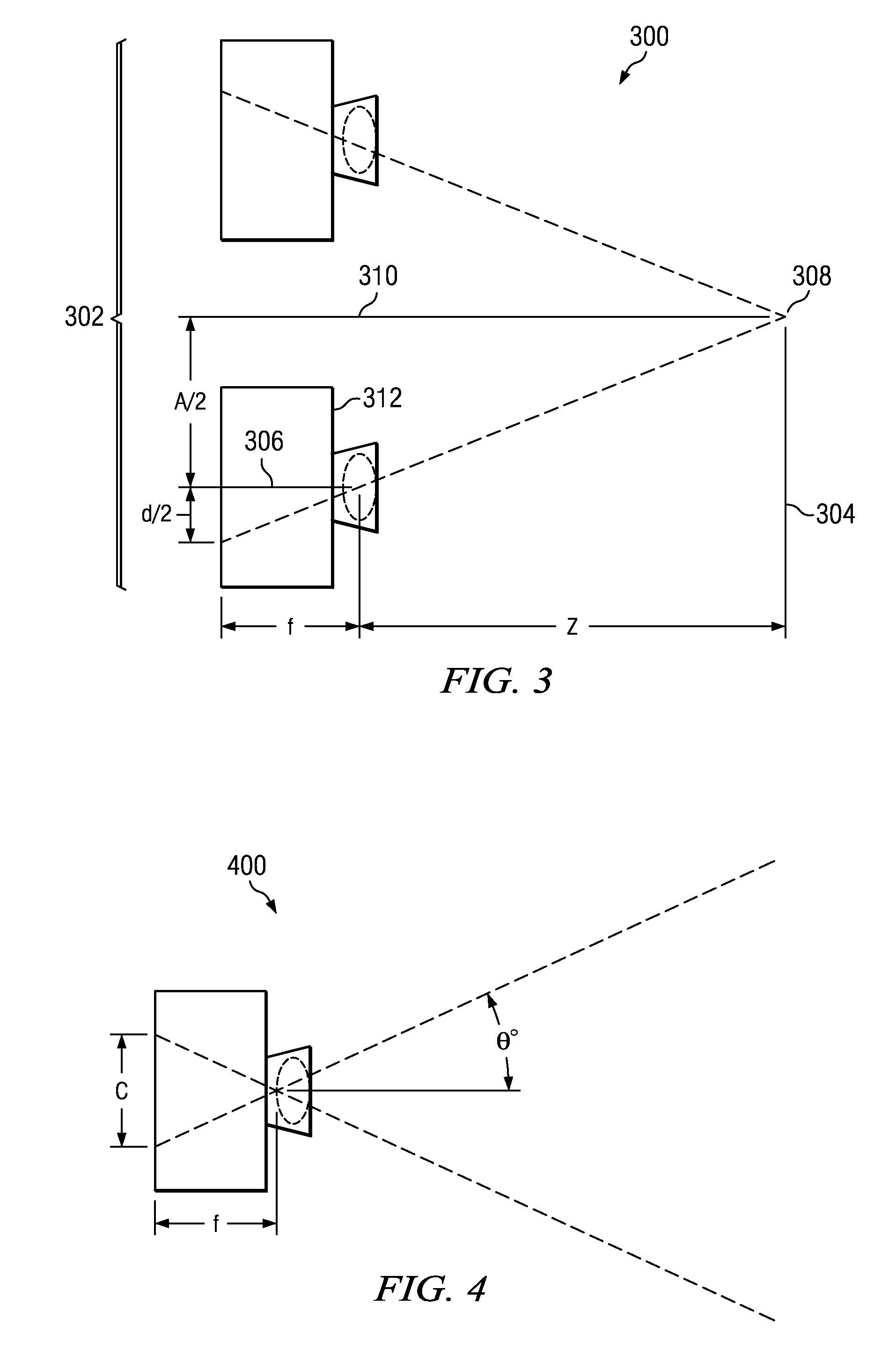Stereoscopic depth mapping
a depth mapping and stereoscopic technology, applied in the field of depth mapping of stereoscopic images, can solve the problems of both compressed and distorted perception of depth
- Summary
- Abstract
- Description
- Claims
- Application Information
AI Technical Summary
Benefits of technology
Problems solved by technology
Method used
Image
Examples
Embodiment Construction
[0026]When two cameras of fixed separation capture a stereoscopic image pair from a real scene, the depth on a playback stereo display is non-linear. Uniformly-spaced objects (such as telegraph poles disappearing into the distance) appear to get closer together the further away they are. As used herein, the term “camera” refers to either a physical camera or a capture viewpoint in Computer Generated Imagery (CGI) virtual space. The present disclosure may relate to both a real-world capture environment and a CGI environment.
[0027]FIGS. 1A and 1B are schematic diagrams illustrating this depth distortion phenomenon. FIG. 1A illustrates the top view of a scene 100 with stereoscopic cameras 101 and substantially equally-spaced objects 103. FIG. 1B illustrates the top of the same scene as visualized on a display 150. Viewer 151 faces a display with a display plane 155, and perceives the objects 153 at a non-uniform depth.
[0028]FIG. 2 is a schematic diagram illustrating a 3-D scene 200 and...
PUM
 Login to View More
Login to View More Abstract
Description
Claims
Application Information
 Login to View More
Login to View More - R&D
- Intellectual Property
- Life Sciences
- Materials
- Tech Scout
- Unparalleled Data Quality
- Higher Quality Content
- 60% Fewer Hallucinations
Browse by: Latest US Patents, China's latest patents, Technical Efficacy Thesaurus, Application Domain, Technology Topic, Popular Technical Reports.
© 2025 PatSnap. All rights reserved.Legal|Privacy policy|Modern Slavery Act Transparency Statement|Sitemap|About US| Contact US: help@patsnap.com



